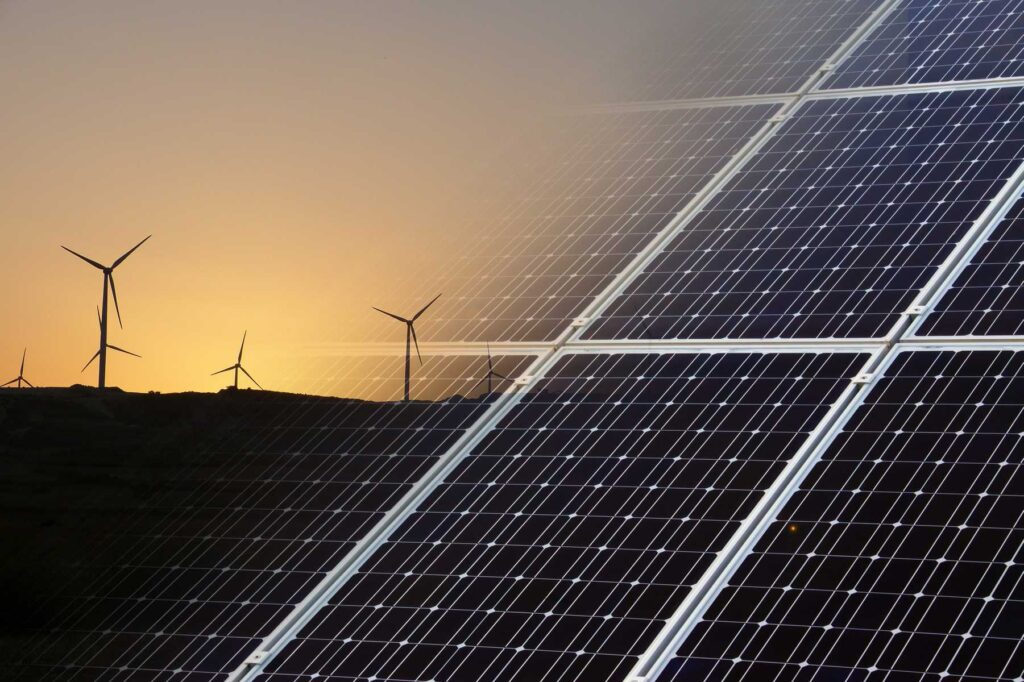Despite all the news surrounding solar energy, it may come to your surprise that only 21% of the United States’ energy comes from renewable energy production. Pollution on a global scale is causing irreversible global warming, making alternative energy sources a paramount investment.
Considering the current climate crisis, is there a scenario where we live only with solar? Continue reading to find out how solar works and how we could use it to change our energy practices.
What Are Solar Energy, Solar Cells, and Solar Panels?
For an idea of how we could live only with solar, we must understand how solar energy works. The energy from the sun converts into solar radiation that is harnessed to generate electricity. Solar energy is a clean alternative to traditional forms of power.
These power systems use solar cells to convert thermal radiation directly into electricity. They are made of a semiconductor material (usually silicon) that allows the cells to absorb sunlight. The efficiency of each solar cell is determined by the semiconductor used in its production.
To maximize their efficiency, a group of solar cells is strung together to create solar panels. These are created in a variety of sizes to produce thermal energy for electricity, heating, cooking, and other uses.
With the push for global renewable energy sources, the cost of solar panels is beginning to decrease. We’re finding it easier for residential customers to install a solar panel system for their homes. Those considering going solar should understand how their new power system works to provide clean energy.
How Does a Solar Panel Collect and Store Energy?
As mentioned above, solar panels use a series of solar cells to capture sunlight. The abundant energy travels through the semiconductor material of the solar cells in a phenomenon called the photovoltaic effect (more on photovoltaics later). The current connects to a metal contact line that allows it to flow into the electric grid of your home.
The efficiency of a solar panel’s cells is determined by the bandgap. This refers to the wavelength of sunlight the semiconductors can absorb. The more that the bandgap matches with the wavelength of light shining on the cell, the more efficient the solar panel.
There are several semiconductors used in solar panels, each with its unique bandgap. The most common semiconductor materials include:
- Silicon
- Cadmium Telluride
- Copper Indium Gallium Diselenide
When solar panels convert sunlight into energy, that power needs storage. There are a few solutions for storing solar energy. The most common include thermal, battery, and mechanical.
Thermal storage is typically connected to water-heated panel systems. The energy is transferred into an insulated water tank and stored until needed. Most applications for thermal storage involve heating and cooling solutions.
Battery storage is most commonly seen in residential applications. When solar energy is collected, it transfers into an electrochemical battery, where chemical reactions within the battery keep the energy intact. The reactions are reversed when the battery is discharged.
When excess solar energy exists, it can convert into mechanical storage methods that use kinetic energy to quickly produce electricity when needed. Examples of mechanical storage methods include:
- Flywheels
- Pumped hydros
- Compressed air
Solar Photovoltaic Technology Basics
Solar panels use photovoltaics (PV) to send electrical current to external applications. Depending on a variety of factors, there are several types of PV cells used. Common factors that determine which PV technology is necessary include bandgap, lifespan, cost, and accessibility.
Silicon photovoltaics are the most common cells used in solar panels. Created from quartz sand which is found on most beaches, it is one of the most abundant materials on Earth. Silicon cells are highly efficient, affordable to produce, and have a long life.
Perovskite photovoltaics use layers of semiconducting materials to coat a substrate. They are easier to assemble than silicon and are just as efficient. However, their lifespan is lower, so researchers need to make them more durable before they’re used for residential purposes.
Multijunction photovoltaics takes multiple layers of different semiconductors and stacks them. Each layer has a different bandgap, allowing the cell to collect more energy wavelengths. While these cells are highly efficient, they are much harder to make.
Concentration photovoltaics is a method used to concentrate solar energy directly on a cell. Using mirrors and lenses, these systems send more energy onto the same space, requiring less PV material. This method is still new, so it has limited applications.
Could We Live Only With Solar?
The answer to this question is subject to scale. With traditional energy sources polluting our environment beyond repair, there is a widescale call for cleaner solutions. However, population growth and political discord make global solar systems a challenge.
Studies in Europe and North America have concluded that renewable energy sources could power the world by 2050. This feat requires cooperation from 143 countries and includes a mix of wind, water, and solar power. A more realistic number, the United States predicts that less than half of its electricity generation will come from renewable resources.
While global, clean energy is still years away, your home can go 100% solar. It’s so possible that even those with a modest budget can update their energy system.
Those that would like to add solar panels to their homes won’t find a better time to invest. The United States government is providing financial incentives for homeowners, offering up to 26% off their purchase in tax credit. Combined with all-time low production costs, this makes owning a solar system worthwhile.
With this in mind, you don’t have to own your solar panel system to take advantage of its benefits. Some installation companies offer solar leases, in which you pay a monthly amount to use the energy.
But what if you live in an apartment, townhouse, or rental and think you can’t go solar? Well, now you can! Energy companies are using utility-scale solar plants to produce a massive amount of green energy for residential purposes.
Regardless of your living condition, you can make a switch to clean energy alternatives. No down payment, no 15-20 year commitment, no equipment to maintain.
Make the Switch To Green Energy
With green energy, you’ll not only help protect the environment, but you’ll save money on your energy bill. Chariot Energy provides some of the most competitive solar energy rates in Texas.
When you’re ready to update your power system, click here to find the plan that fits your budget. You can also contact us by phone or chat module. Let us worry about whether the sun is going to shine….you just sit back and enjoy the 100% solar without panels on your roof.


